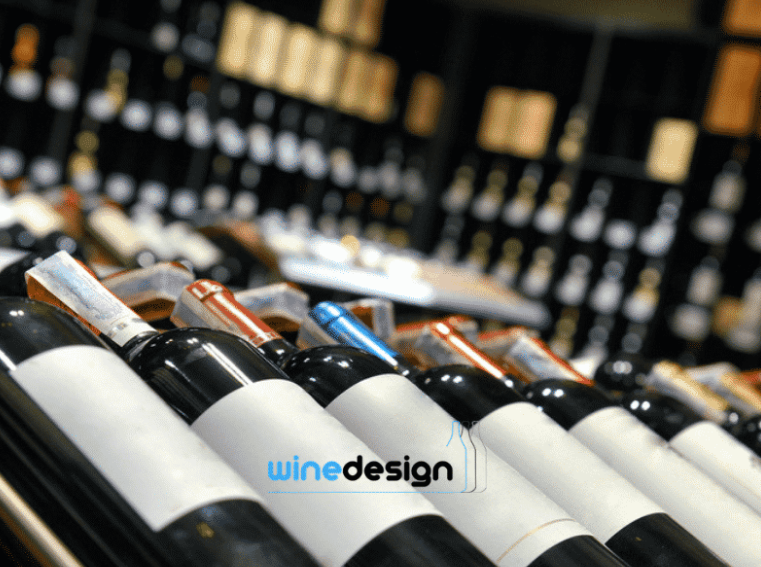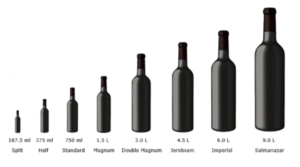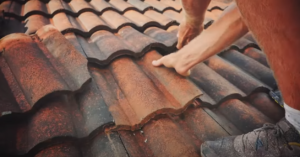Wine label: What are the ways to embellish your project?

Tradition in the world of wine plays an extremely important role. This is an asset that producers can use to adjust wine prices. In the case of this vineyard in question, one can expect the prices to be … high. Like the design of packaging in general, wine labels vary a lot in terms of style. The four most popular styling ideas are:
- wine labels that establish a link with history and tradition
- wine labels that use abstract art
- wine labels that showcase minimalism
- wine labels that refer to modern trends or feature a funny and daring design
Let’s see what these four styles look like.
Play with tradition in the creation of wine labels

Older vineyards like to play the card of tradition, which is often reflected in the design of the labels.
They are quite similar, aren’t they?
Vintage labels often feature typography that mimics handwriting, with text surrounding or under a single image (also drawn by hand). There isn’t a lot of negative space, mainly due to the abundance of information on the label.
Abstract art in wine label design
An abstract wine label is a great way to grab the attention of a lost shopper. Among the many labels that attack the buyer with foreign names, images and abundant patterns, an abstract form is much more unexpected.
Generally speaking, abstract designs involve the use of asymmetrical shapes, artistic graphics, and typography with contemporary fonts.
A fantastic example of an abstract label design is the Australian brand, Jake Busching. The bluish label, with the color palette reminiscent of grapes, is unique.
This design plays with the shape of the label and moves all the product information onto a separate label.
The minimalism of wine labels
Minimalism is perhaps one of the most popular design movements these days, and applies to everything from home decor to packaging.
Minimalist wine labels tend to reduce not only the printed graphics and text but also the shapes of the labels themselves. Minimalism is also a simple play of colors. The design below draws its strength from the iconic contrast between white and black. Without any additional stake, this bottle defines a modern approach to wine labels.
Minimalism can also mean reducing graphic design to its bare minimum, but including the name and brand recognition tool (like a logo). If you’ve seen the Extenso or Saramago bottle on the shelves, it’s not the typography that caught your eye.
A beautiful example of minimalist typography was featured on the Packaging of The World site, where a few bottles inspired by world-famous artists were on display.
The modern approach: funny or captivating labels

Last but not least is the broad category of contemporary wine label designs. This great set of designs includes all the ideas that attempt to grab the customer’s attention by being bold, funny, cheeky, or striking in some way.
A few examples will help you understand this idea.
Elderslie Hill , an Australian brand, took inspiration from the artistic portraits of its founders to create the design of its wine label. These portraits, however, were then “broken up” to form a mosaic. The deep dark colors and understated silver print of the brand name make this one of the best wine label designs.
Some wine producers tend to use something more fun, like bold formulas, pictures, or sketches.
One brand of wine used the design of a dressed frog which, changing its appearance, indicates different types of wine. This product line includes Arrogant Frog (“Arrogant Frog”), Elegant Frog (“Elegant Frog”), or even special selections – like Arrogant Frog Reserve.
Other brands have even more unusual ideas. Australian Red Wine Boarding Pass Shiraz turns its label into a boarding pass and the back label into a fun version of a security card. Creative thinking in all its glory!
Designing a wine label – what are the ways to embellish your project?

Sometimes you’re going to want to add something new to your label. Bringing a reserve edition of your best wines to market is worth celebrating – especially when it comes to their labels.
Hot stamping is a method of adding a layer of colored film to a layer of cardboard or paper during the printing process.
Although this method is quite often used in the production of packaging, wine labels can also be finished with hot stamping .
The delicate glow of silver or gold (the most popular foil choice) adds an even more upscale character and can be used successfully in the typography of wine labels – hot stamping is particularly suitable for letters or logos.
Typically, hot stamping is associated with embossing. This is another printing method that involves printing a given graphic element in a convex or concave fashion, creating a more complex experience when you touch the label.
When crafting wine labels , consider other aspects as well, such as the use of negative space and the choice of fonts. Let’s take a closer look at these elements that we mentioned earlier in this article.
Negative space refers to all parts of the background of your wine label. In other words, anything that is not a graphic, not a typography, or a detail of the product is part of the negative space. The colors you choose for the negative space of your wine labels are of great importance.
Most wine brands choose toned colors , either black or darker shades of blue, or light shades, beige, light yellow or white. In contrast, orange, red and gray colors are not common.
Fonts also determine the type of customer your wine label will attract. Handwritten letters look more personal and upscale, and possibly more appealing to buyers looking for a premium brand. On the other hand, a survey of millennial and millennial wine buying habits found that a more original design attracted more attention. And to be honest, no one really cares to read the product details.
Another article on this blog that may interests you:
5 Essential Tips for Effective Wine Label Design





